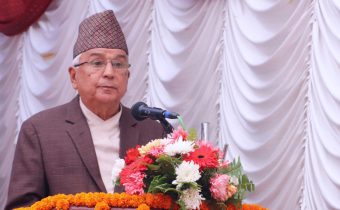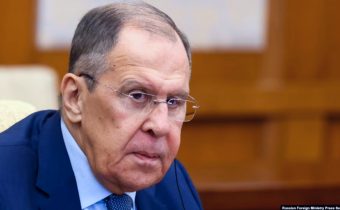By Binu Shrestha & Aashish Mishra,Kathmandu, Sept. 28; With the erection of the ceremonial pole ‘Yosin’, Yenya or Indra Jatra began in the capital on Tuesday. Although marked across Kathmandu Valley as well as in Kavrepalanchowk and Dolakha, the festival is most strongly associated with the city of Kathmandu, perhaps because the celebrations here are widely covered by the media and are also attended by the head of state, foreign dignitaries and high-ranking government and security officials.
Indra Jatra is an extravaganza beyond measure in Kathmandu and the living goddess Kumari is at the centre of it. But what is that like for her? What is it like to be the focus of worship for hundreds, if not thousands of people? What does Yenya mean for the Kumaris?
The Rising Nepal asked this question to two former Kumaris and here is what they had to say.
Rashmila Shakya Kumari From: 1984 to 1991
Rashmila felt amazingly precious during Yenya and enjoyed the ambience when she was brought out of the designated Kumari House in Basantapur on the palanquin. She also shared that she understood she was not a common person when other ‘ordinary’ people came to pray to her.
As the royal Kumari, a status given to the Kumari of Kathmandu, late King Birendra also came to seek her blessings during Indra Jatra. “I knew he was the king of the country. But he did not feel different from other devotees at the time,” she shared. “Now though, I feel proud that the sovereign also came to worship me.”
Rashmila was the last Kumari appointed in the Panchayat era and was the living goddess during the People’s Movement of 1990. It was a time of unrest and upheaval and, even though she was the earthly embodiment of divine power, she too could not remain shielded from it.
“Once, during the movement, tear gas entered my chamber in the Kumari House. I remember it stinging my eyes,” she remembered.
Rashmila spent eight years as Kumari and retired at the age of 11. “I started my normal life after that,” she said. Today, she holds a Masters degree in Information Technology, is married and has a son.
“I experienced two lives in a single lifetime,” she shared her experience with this daily. “No one gets this chance. I feel lucky and proud.”
Rashmila still observes Indra Jatra every year and the fervour and festivities takes her back to the time when she was at the heart of it all.
Matina Shakya Kumari From: 2008 to 2017
Matina was the first Kumari appointed after the abolition of the monarchy and the declaration of the country as a secular republic. And for her, the experience of Indra Jatra was something indescribable. “It is almost otherworldly,” she told The Rising Nepal. “To be on the chariot and be taken around the city.”
Yenya is one of the grandest fiestas of Kathmandu and Kumari is at the centre of it. Worshipped by the city and the country as a living goddess, two presidents – Ram Baran Yadav and Bidya Devi Bhandari – received Tika and blessings from Matina’s hands. Looking back, she finds those times surreal and exciting.
So, how does she feel now, participating in the Jatra she once presided over as a commoner? “Different,” the former Kumari replied, her words failing to encapsulate the emotions her gestures expressed.
“As residents of Kathmandu, the Jatra is and will always be our festival and we will always celebrate it,” her father Pratap Shakya added. “The only difference is that our participation is not as direct as it was before.”
Pratap, though, made one appeal based on his and his daughter’s experiences during Yenya. “Do not throw coins at the chariots.” Metallic coins hurled carelessly become dangerous projectiles that can cause serious injuries to Kumari, the other two living gods Ganesh and Bhairav who are also pulled on chariots, and others around. Last year, during Kwane Ya:, a wayward coin hit the current Kumari near her right eye, making her visibly distressed.
“If such practice continues, there might come a day when relevant bodies decide to pull the gods in closed chariots. After all, safety comes first,” he felt.
The Kumari’s safety was also the first priority during the 2015 earthquake. Even though the Kumari House was not damaged, unlike other nearby structures, the initial 7.8-moment magnitude quake and subsequent aftershocks forced Matina’s family and caretakers to move her to the ground floor and restrict access to worshippers. “This was to ensure prompt evacuation, if the need arose,” Pratap said.
Fortunately, the Kumari House stood firm.
Although ideas for condensing the chariot processions or cancelling them altogether were floated that year, everyone decided to proceed without change. And it was the most managed Jatra of Matina’s nine-year tenure, Pratap said.
“Everyone was serious and careful. Locals and stakeholders kept miscreants at bay and the chariots moved around the city swiftly and smoothly,” he recounted.

















